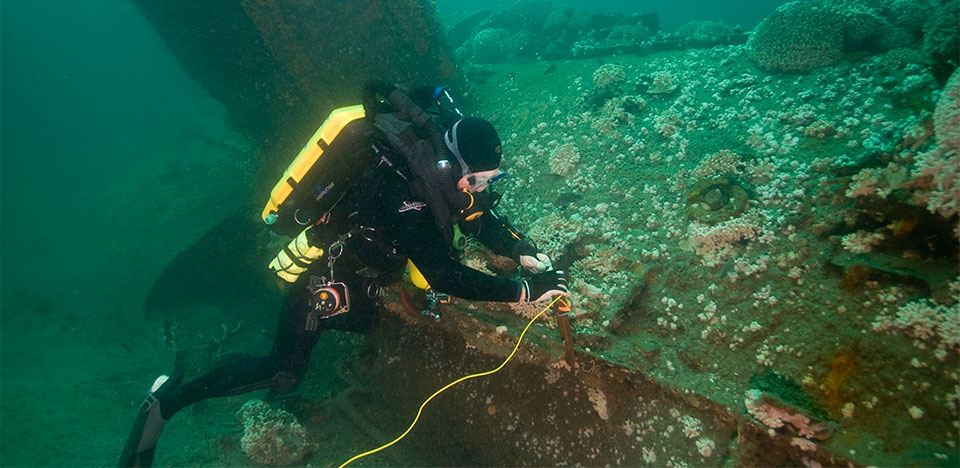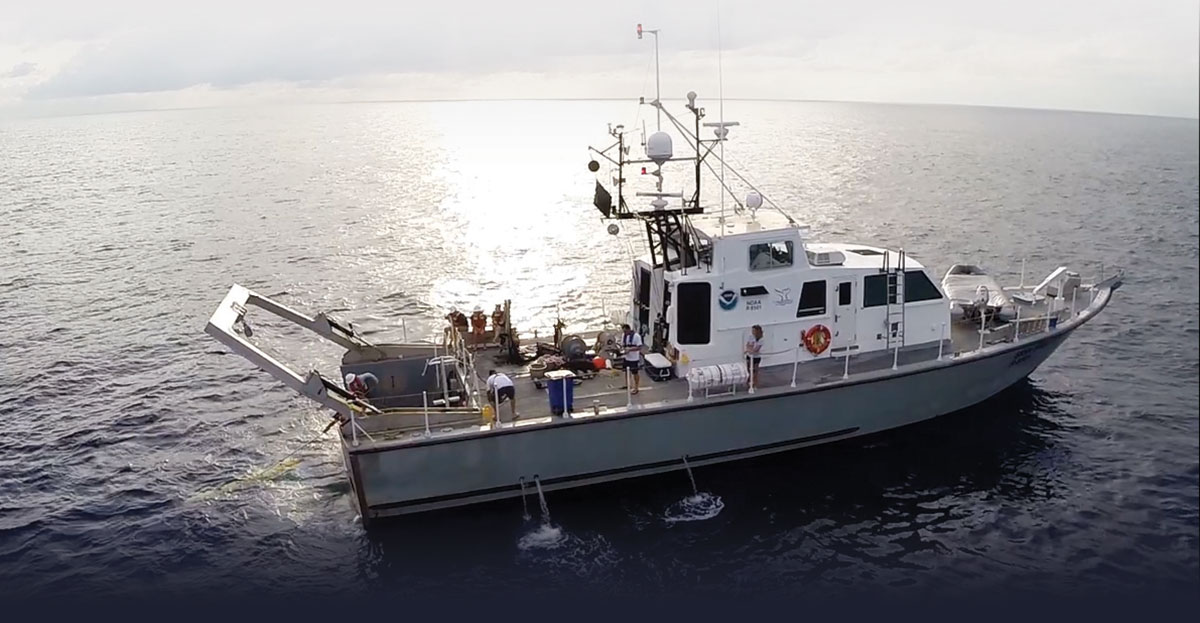Facilitating Science
Monitor

There are several resources available to researchers at Monitor National Marine Sanctuary. Please contact the Research Coordinator for discussions on facilitating research within the Monterey Bay National Marine Sanctuary.
Research Coordinator: Tane Casserley
Boats
The RV Sand Tiger is a 85 Ft research vessel available at day rate or fee/project basis. Please contact the Research Coordinator for more information.

Permits
Monitor National Marine Sanctuary regulations provide for temporary permitting of specific activities that are not otherwise permissible. Such activities are reviewed on a case-by-case basis. Permit requests are evaluated based on their potential single and cumulative impacts to sanctuary resources versus the potential benefits the activity may provide in terms of resource protection. Permits are free and permitted activities are typically research or education-oriented.
A permit is required when an individual wishes to conduct an activity within a sanctuary that is otherwise prohibited. Refer to our Frequently Asked Questions to help determine if a permit is required for your proposed activity. Guidance on how to apply for a sanctuary permit can be found on this page.
The ONMS has the authority to issue permits to allow some types of activities that are otherwise prohibited by sanctuary regulations, but which generally present a public benefit by furthering the management and protection of sanctuary resources. A permit is required to conduct research within the Monitor National Marine Sanctuary.
Diving
Monitor National Marine Sanctuary, located 16 miles off Cape Hatteras in the Graveyard of the Atlantics, protects the wreck of the famed Civil War ironclad USS Monitor. The Monitor presents a challenging dive with strong currents and deep depths limiting it to advanced divers. Diving permits are required for all people who wish to dive within the sanctuary. Permits are free and applications are reviewed on a case by case basis. For more information contact monitor@noaa.gov.Lab Space
Lab space is potentially available through partner facilities such as University of North Carolina Coastal Studies Institute. Use would be discussed on a case by case basis and approval is ultimately the hosting institution’s decision. For more information contact monitor@noaa.gov.
Accommodations
The Monitor National Marine Sanctuary is not able to provide accommodations. However, accomodations may be available at discounted rates through partner institutions. For more information contact monitor@noaa.gov.
Research Areas
There are no special areas that need researchers need to be aware of as they develop research plans. Researchers should, however, be familiar with the various regulations in place at the Monitor.
Data Buoys
A buoy that collects real-time data on oceanic conditions has been deployed in the Monitor National Marine Sanctuary. Collected parameters include wind speed and direction, wave height, dominant wave period, average wave period, air temperature, water temperature and atmospheric pressure. More information on this buoy may be accessed from here.
Equipment and Instruments
The SRVX Sand Tiger, an 85-ft research vessel, may be available at day rates or for a set fee per project. In addition, the sanctuary owns a CTD that may be available upon request and mutual agreement.
Special Considerations
There are no special considerations that researchers need to be aware of at the Monitor National Marine Sanctuary.
Key Documents
Research Needs
Documents that describe the immediate science needs for critical management issues.
Condition Report
The Condition Report is a summary of the status and trend of sanctuary resources, pressures on those resources, and management responses to the pressures that threaten the marine environment.

